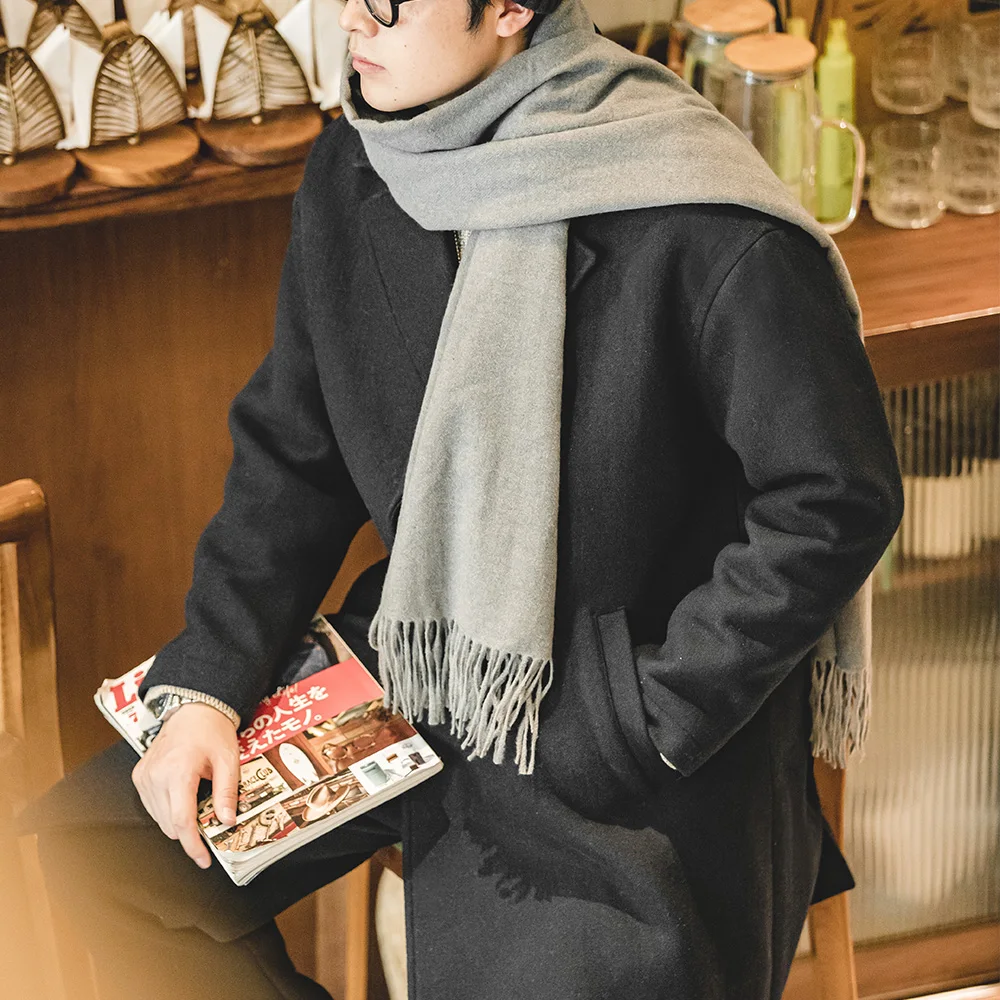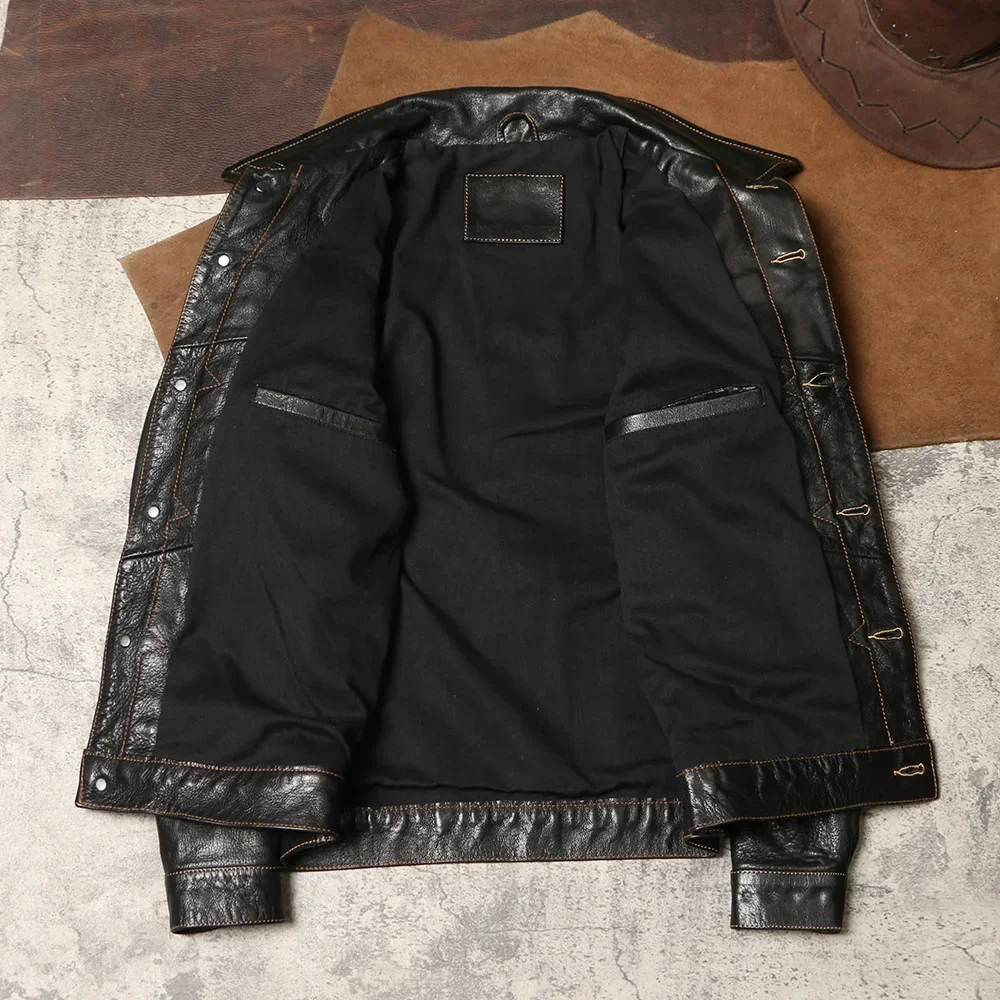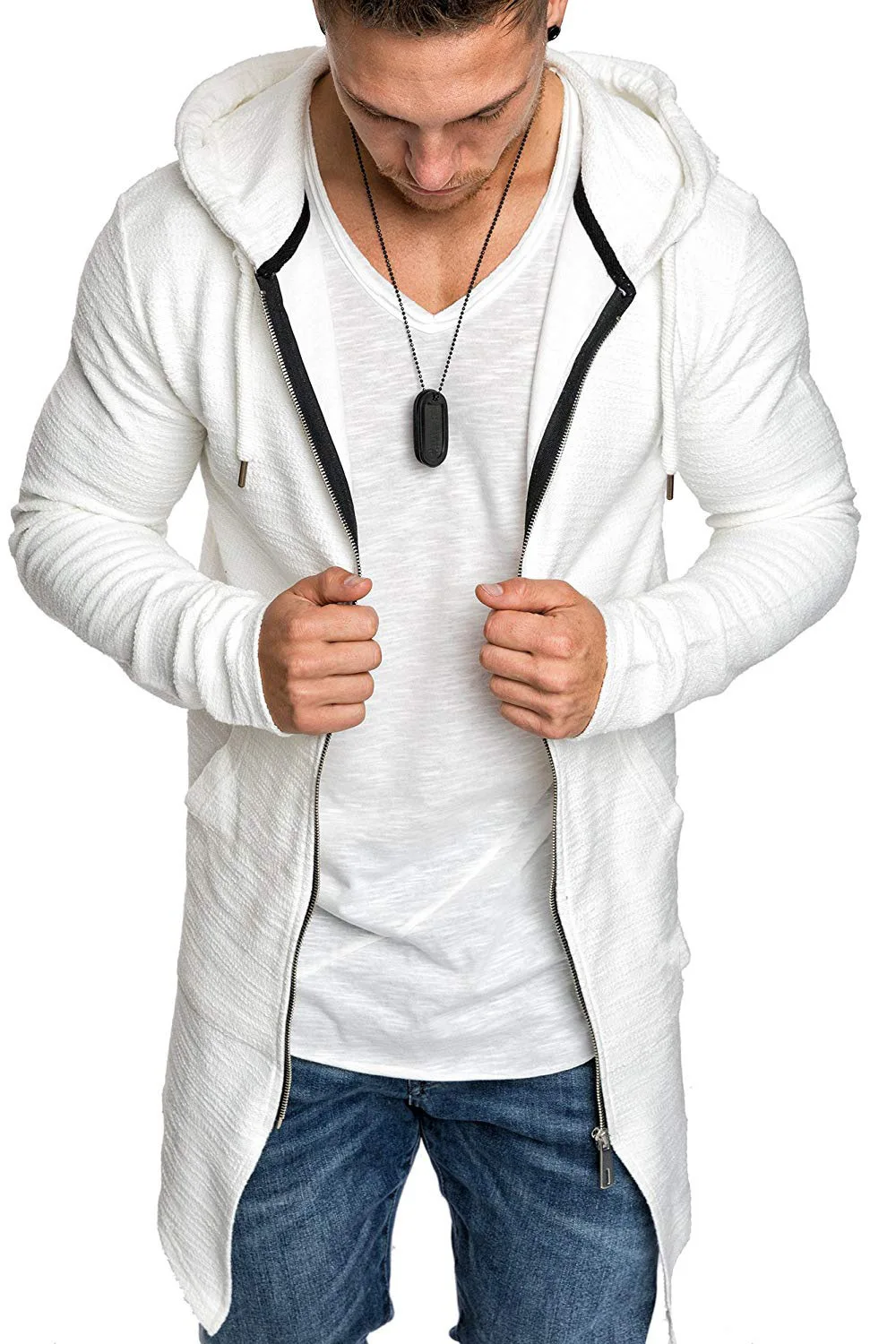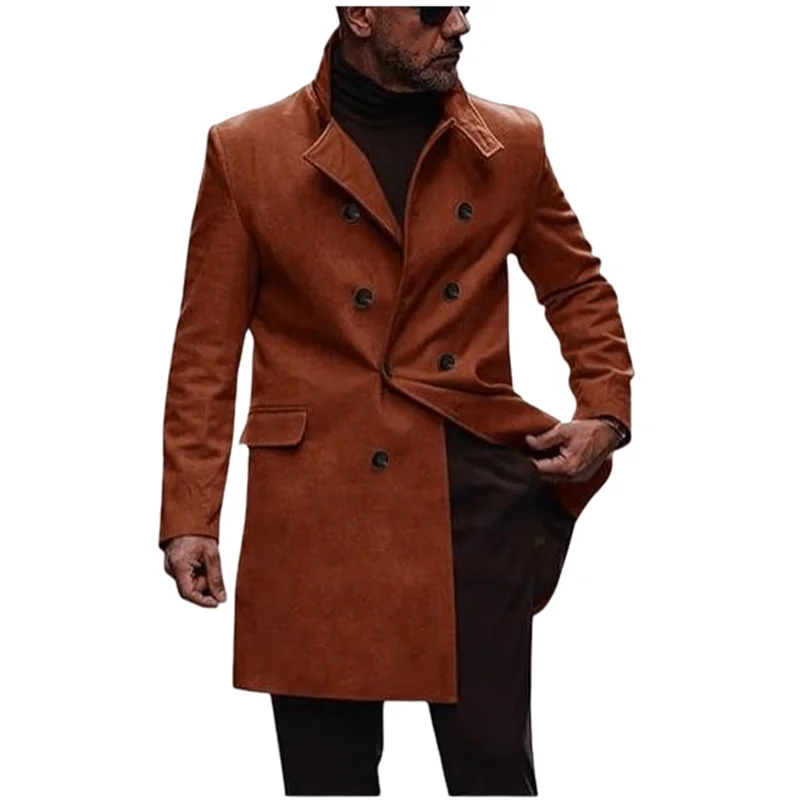Decoding Your Spring Outerwear: Topcoat or Blazer?
Spring brings beautiful blooms and warmer days, but also unpredictable weather patterns that can leave many men puzzled about their outerwear choices. The transition from winter to summer creates a unique challenge: finding pieces that offer enough warmth for chilly mornings while remaining comfortable during warmer afternoons.
Two classic options stand at the forefront of this seasonal dilemma: the elegant topcoat and the versatile blazer. Both serve important roles in a well-rounded spring wardrobe, but they fulfill distinctly different purposes and suit different occasions.
Making informed decisions about choosing the right coat length becomes particularly important during spring when versatility is key. The perfect choice depends on various factors including:
- Temperature fluctuations (sometimes 20+ degrees in a single day)
- Unexpected rain showers and spring winds
- Varying formality requirements from business meetings to weekend brunches
- The need to seamlessly transition between indoor and outdoor environments
This guide will help you confidently navigate the topcoat versus blazer decision, ensuring you’re appropriately dressed for any spring occasion while maintaining comfort and style.
Understanding Topcoats: The Elegant Outer Layer
A topcoat represents refined outerwear designed specifically to be worn over other clothing layers, including suits and blazers. Distinguished primarily by its longer length—typically falling to mid-thigh or just above the knee—this garment provides substantial coverage while maintaining a sleek silhouette.
Spring-appropriate men’s topcoats feature lighter construction than their winter counterparts. The ideal spring topcoat utilizes fabrics weighing between 10-14 oz (280-400g), offering enough structure to maintain shape without unnecessary bulk. Common spring topcoat materials include:
- Lightweight wool blends with enhanced breathability
- Cotton gabardine with natural moisture-wicking properties
- Twill weaves that provide structure with reduced weight
Construction details matter significantly in determining a topcoat’s spring suitability. Quality spring topcoats feature partial lining rather than full lining, allowing better air circulation. The shoulder structure typically maintains some formality through light padding, while the overall cut allows comfortable movement and layering capacity.
Most topcoats fall on the dressier end of the formality spectrum, making them perfect companions for business attire, though contemporary styles can certainly complement smart casual ensembles as well. As investment pieces, quality men’s wool overcoats typically command higher price points, reflecting their versatility and craftsmanship.
Understanding Blazers: The Versatile Jacket
Blazers serve as standalone jackets rather than true outerwear, typically ending at hip length with a more structured appearance than casual jackets. Originally developed as sporting attire, the modern blazer has evolved into a cornerstone of versatile menswear.
Spring-appropriate blazer fabrics emphasize breathability and comfort while maintaining enough structure to create a polished silhouette. Ideal options weigh between 7-10 oz (200-280g) and include:
- Linen or linen blends that offer exceptional breathability
- Cotton twill providing durability with a casual feel
- Lightweight wool hopsack with natural temperature regulation
- Seersucker for distinctive texture and cooling properties
Construction varies significantly across spring blazers. Unstructured options remove much of the internal canvassing and padding for a relaxed, comfortable fit perfect for warming days. More traditional models maintain some structure through partial canvas construction, creating a balanced silhouette without excessive weight.
Blazers occupy a sweet spot in the formality spectrum, bridging the gap between dress coats and casual jackets. They excel in business casual environments but can be styled down for weekend wear or elevated for more formal settings when paired appropriately.
While quality blazers represent significant investments, their incredible versatility across multiple outfits and occasions often justifies their place as wardrobe foundations.

Key Differences at a Glance: Topcoat vs. Blazer
Understanding the fundamental differences between these garments helps inform better wardrobe decisions. Here’s how topcoats and blazers compare across key factors:
| Feature | Topcoat | Blazer |
|---|---|---|
| Length | Mid-thigh to knee length | Hip length |
| Primary Function | Outerwear designed to be worn over other layers | Standalone jacket meant as a middle layer |
| Spring Fabric | Lightweight wool, gabardine (10-14 oz/280-400g) | Linen, cotton, lightweight wool (7-10 oz/200-280g) |
| Weather Protection | Moderate wind resistance, some water repellency | Minimal weather protection |
| Layering Capacity | Can be worn over suits, blazers, sweaters | Typically worn over shirt, optionally over light sweater |
| Formality Range | Business formal to smart casual | Business casual to smart casual |
| Typical Price Range | Higher investment as outerwear piece | Moderate to high depending on construction |
The men’s coat length guide shows how these length differences significantly impact the overall appearance and functionality of each garment. Topcoats provide greater coverage and formality, while blazers offer enhanced mobility and versatility across casual settings.
When comparing these options, consider that the fundamental difference lies in their intended purpose: topcoats serve primarily as protective outer layers, while blazers function as style-defining middle layers. This distinction drives many of the other differences in construction, fabric, and appropriate contexts.
Understanding these short vs. long coats differences helps clarify when each garment performs at its best, particularly during the transitional spring season.
Spring Weather Considerations: Temperature & Precipitation
Spring weather presents unique challenges requiring thoughtful outerwear choices. The season typically unfolds in distinct phases, each calling for different approaches:
Early Spring (March-Early April)
During this period when temperatures typically range from 45-60°F (7-15°C), topcoats reign supreme. Their longer length and substantial construction provide necessary warmth against lingering winter chills. Spring-weight topcoats in wool blends offer ideal insulation while remaining lighter than winter alternatives.
Mid-Spring (Mid-April-Early May)
As temperatures rise to 50-65°F (10-18°C), the choice becomes more nuanced. Mornings often remain cool while afternoons warm considerably. Topcoats may become too warm during peak daytime hours, while blazers alone might prove insufficient during cooler periods. This transition period often requires layering strategies with both garments.
Late Spring (Mid-May-June)
With temperatures consistently reaching 60-75°F (16-24°C), blazers typically become the preferred option. Their lighter weight and enhanced breathability better accommodate warming conditions, while still providing enough structure for professional settings.
Precipitation considerations further distinguish these garments. Many spring topcoats incorporate water-resistant fabrics like gabardine, providing practical protection against unexpected showers. Mastering spring topcoat selection means looking for models with sealed seams and water-repellent finishes for optimal performance.
Blazers, while stylish, offer minimal weather protection. Their lighter construction and absence of water-resistant treatments make them suitable primarily for fair-weather days or indoor events.
The breathability factor becomes increasingly important as spring progresses. Blazers typically offer superior ventilation through their lighter construction and often unlined back panels, making them more comfortable during warmer periods.
Formality & Occasion Guide: When to Wear Each
Choosing between a topcoat and blazer often depends on the specific occasion and its formality requirements. Here’s a practical guide for both garments:
Topcoat Appropriate Occasions:
* Business formal environments where presentation matters significantly
* Morning commutes to professional settings, particularly in early spring
* Evening events requiring sophisticated appearance (theater performances, upscale dinners)
* Spring weddings and formal celebrations, especially outdoor ceremonies
* Business travel requiring a polished appearance upon arrival
The topcoat excels in these scenarios due to its elegant drape, substantial presence, and ability to maintain a refined appearance even in variable conditions. Its longer silhouette creates a commanding impression suitable for occasions where formality takes precedence.
Blazer Appropriate Occasions:
* Business casual workplace environments
* Client meetings in relaxed settings (coffee shops, lunch appointments)
* Weekend social gatherings and casual celebrations
* Restaurant dinners and informal evening events
* Campus and educational settings balancing comfort with professionalism
Blazers shine in these contexts due to their exceptional versatility, comfortable proportions, and ability to elevate casual elements while softening formal ones. The light topcoat layering approach offers similar versatility but with enhanced weather protection.
When considering occasions with ambiguous dress codes, remember that topcoats generally elevate an outfit’s formality, while blazers balance formality with approachability. For settings where making a distinct impression matters, the topcoat often provides greater impact, while the blazer excels when adaptability across various social contexts is paramount.
Spring Styling Guide: Outfit Combinations
Creating harmonious spring outfits requires understanding how these garments interact with other wardrobe elements. Here are practical combinations for both options:
Topcoat Outfit Combinations:
The Business Professional
* Foundation: Navy or charcoal topcoat over matching suit
* Accents: White or light blue dress shirt, solid or subtly patterned tie
* Footwear: Leather oxford or derby shoes
* Spring touch: Pocket square in seasonal pastel shadeThe Smart Casual
* Foundation: Camel or light gray topcoat over fine merino sweater
* Bottom: Well-fitted dark denim or chinos
* Footwear: Leather loafers or minimal sneakers
* Spring touch: Light scarf in complementary color for variable temperaturesThe Weekend Refined
* Foundation: Twill topcoat in olive or burgundy over casual button-down
* Bottom: Relaxed chinos or quality denim
* Footwear: Suede chukkas or dressy boots
* Spring touch: Knit beanie for cooler mornings, easily pocketable
Blazer Outfit Combinations:
The Office Appropriate
* Foundation: Navy blazer over light blue or white Oxford shirt
* Bottom: Gray or khaki trousers
* Footwear: Brown leather loafers or derby shoes
* Spring touch: Subtle floral or botanical pocket squareThe Weekend Social
* Foundation: Textured blazer in brown or olive over simple t-shirt
* Bottom: Dark well-fitted jeans
* Footwear: White minimal sneakers or suede loafers
* Spring touch: Lightweight knit sweater tied around shoulders for temperature dropsThe Spring Event
* Foundation: Light blue or tan blazer over striped or micro-pattern shirt
* Bottom: White or cream trousers
* Footwear: Suede loafers or minimal dress shoes
* Spring touch: Lapel pin or colorful boutonniere for celebratory feel
Spring color palettes generally favor lighter tones and subtle patterns. For topcoats, consider navy, camel, light gray, or subtle herringbone patterns. Blazers welcome brighter blues, greens, and even subdued patterns like glen checks or light windowpanes that celebrate the season’s spirit.

Accessories play crucial roles in completing these looks. For topcoats, focus on sophisticated touches like cashmere scarves, leather gloves, and structured hats. Blazer outfits welcome more casual additions like knit ties, woven leather belts, and textured pocket squares. Both benefit from thoughtful essential dress coat accessories that enhance their inherent characteristics.
Practical Considerations: Versatility & Investment
When evaluating these garments as potential additions to your wardrobe, consider their practical advantages and limitations:
Topcoat Advantages:
* Provides superior protection against wind, light rain, and cooler temperatures
* Creates a sophisticated silhouette that enhances both formal and smart casual attire
* Offers greater coverage for layering multiple pieces underneath
* Typically constructed with higher-quality materials designed for durability
* Makes a stronger style statement with distinctive presence
Topcoat Limitations:
* Can become uncomfortably warm during mid-to-late spring days
* Less versatile for casual settings and relaxed social occasions
* Requires more storage space and careful maintenance
* Represents a higher initial investment (typically $300-800 for quality options)
* More challenging to pack for travel due to size and structure
Blazer Advantages:
* Exceptional versatility across formality levels from office to weekend wear
* More comfortable during active movement and extended wear
* Easier to integrate with existing casual wardrobe elements
* Generally more appropriate as spring progresses toward summer
* Adaptable through multiple seasons with proper layering
Blazer Limitations:
* Provides minimal protection against precipitation or significant temperature drops
* Insufficient as standalone outerwear during cooler spring periods
* May appear too casual for formal business or ceremonial settings
* Less impactful as a distinctive style statement compared to a topcoat
For those seeking substantial coverage, exploring men’s long overcoat options provides additional protection against variable spring conditions while maximizing style impact.
Decision Framework: Making Your Choice
To determine which garment best suits your needs, consider these key factors:
1. Climate Assessment
Evaluate your local spring weather patterns honestly. Regions with prolonged cool periods and frequent precipitation favor topcoats. Areas with mild springs and rapid warming trends make blazers more practical for longer periods. Consider temperature ranges, rainfall patterns, and wind conditions typical for your area during March through May.
2. Lifestyle Evaluation
Your daily activities significantly impact which garment serves you better. Those in formal business environments with client-facing roles often benefit more from a topcoat’s refined appearance. Creative professionals or those in casual workplaces may find blazers offer greater everyday utility. Consider how much time you spend:
* In formal business settings
* Commuting outdoors
* Transitioning between indoor and outdoor environments
* Attending evening social functions
3. Wardrobe Analysis
Examine your existing wardrobe objectively. The ideal choice complements what you already own rather than requiring extensive additional purchases. Topcoats pair naturally with suits and dressier attire. Blazers integrate seamlessly with business casual and smart casual wardrobes. Consider which garment creates more complete outfits with your current clothing.
4. Personal Style Consideration
Your personal aesthetic preferences matter significantly. Those drawn to classic, refined styles often connect more with the elegant drape and presence of topcoats. Men preferring relaxed versatility typically gravitate toward blazers. The perfect coat length for height helps ensure whichever option you choose flatters your proportions.
For many men, investing in both pieces represents the ideal solution, allowing appropriate choices across all spring conditions and occasions. If budget constraints require choosing one, prioritize the garment aligning with your most frequent activities and existing wardrobe foundations.

Supplemental Content: Common Questions About Spring Outerwear
Can a topcoat be worn casually in spring?
Yes, topcoats can absolutely work in casual spring contexts when styled appropriately. Choose relaxed fabrics like twill or gabardine in less formal colors (camel, light gray, olive). Pair with casual elements like quality denim, merino sweaters, and minimal sneakers to create balanced looks. The key is ensuring the overall outfit maintains consistent levels of refinement.
What defines a spring-weight topcoat versus a winter one?
Spring topcoats differ from winter versions primarily in weight, construction, and color. Spring models typically feature fabrics in the 10-14 oz range (compared to winter’s 16-24 oz), utilize partial rather than full lining, and often incorporate lighter, brighter color palettes. Mastering lightweight topcoat styling involves understanding these seasonal distinctions.
Which spring colors work best for topcoats versus blazers?
Spring topcoats excel in sophisticated neutrals (camel, light gray, stone) that provide versatility across various outfits. Navy remains universally appropriate, while subtle patterns like herringbone add visual interest without overwhelming. Blazers welcome a broader color palette including blues, greens, and even subtle patterns that might appear excessive in topcoat form.
What layering pieces work well under both garments?
Both topcoats and blazers pair excellently with:
* Merino wool sweaters in varying weights
* Quality oxford and poplin shirts
* Lightweight cashmere knits
* Fine-gauge turtlenecks early in the season
The difference lies primarily in quantity—topcoats accommodate more substantial or multiple layers, while blazers work best with thinner individual pieces that maintain a clean silhouette.
By carefully considering these factors, you’ll make confident choices between topcoats and blazers this spring, ensuring you’re appropriately dressed for any occasion while maintaining comfort through the season’s variable conditions.

